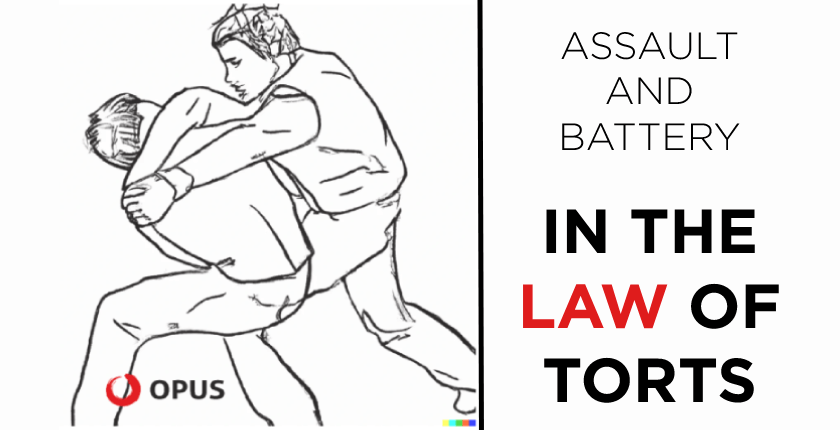Contents
BOOK A FREE DEMO CLASS ?
Assault and battery are two common crimes that can be charged under tort law. In this blog post, we’re going to discuss the difference between assault and battery. We’ll also discuss the difference between the two crimes and how they are prosecuted. By the end of this post, you should have a better understanding of what is assault and battery difference.  Contents [show]
Contents [show]
 Contents [show]
Contents [show]What Is Assault?
If you’ve ever been the victim of assault, you know that it can be a frightening experience. Assault is a crime that can happen to anyone, and it’s often accompanied by violence. In this blog, we will discuss the definition of assault and battery in the law of torts and discuss some of the different ways that these crimes can manifest themselves. Assault is an intentional, unlawful threat by word or act to do bodily harm to another person. In order to commit assault, the defendant must have made an apparent attempt to carry out their threat – they must have shown that they were capable of harming the victim if not prevented. This means that assaulting someone without actually injuring them is not considered an assault. However, making a threatening gesture or statement is enough to constitute assault. Battery is an intentional physical contact with another person without their consent. To commit battery, the defendant must make direct physical contact with the victim without their consent or permission – this means that grabbing someone by the arm would be considered battery, as would punching them in the face. Again, making a threatening gesture or statement is enough to constitute battery. Both assault and battery are intentional torts – this means that for a plaintiff to win their case, they only need to show that the defendant intended to commit these acts (as opposed as merely intending to threaten). This makes prosecution more likely since it’s easier for prosecutors to prove intent than in other crimes where there’s no specific intent required (such as murder). Assault and battery are also both criminal offences in some jurisdictions (such as California), while in others they are merged into one crime known as assault. Our Youtube CLAT SessionsWhat Is Battery?
When it comes to the distinction between assault and battery, most people are familiar with these terms. However, these terms have a more specific definition that you may not be aware of. In short, assault is defined as an attempt or threat to harm another person, while battery is the actual physical act of harming someone. To make a successful claim for assault or battery, the plaintiff must prove that the defendant had the intent to cause harm. This means that even if the defendant did not actually injure anyone – for example, by throwing a punch – he or she can still be liable if he or she had intent to cause harm. This can include anything from making unwanted contact to throwing something at someone. In addition to proving intent, the plaintiff must also show that the defendant committed an act of physical contact that was unwanted and harmful. This can be anything from touching someone without their consent to punching them in the face. Even if there is no injury inflicted as a result of this contact, it can still be considered battery under some circumstances. Finally, emotional distress damages may also be awarded in an assault or battery claim if they are deemed necessary to compensate for any mental anguish suffered as a result of being assaulted or battered. For example, if you were subjected to threats of violence on multiple occasions and eventually became afraid for your safety, you may have a valid claim for emotional distress damages. As you can see from these talking points, understanding assault and battery in the law of torts is essential knowledge when seeking legal help in relation to an alleged attack or injury. By knowing about common defences and what factors must be proven in order for plaintiffs to win their cases, you can put yourself in a much better position when seeking legal redress.| You Can Also Check | |
| OPUS CLAT Offline Full Test | Download Now |
| OPUS AILET Offline Full Test | Download Now |
| Try Out our Online CLAT Mocks | |
| CLAT Mock Test | |
The Difference Between Assault And Battery
When it comes to assault and battery, the difference between the two can be confusing and sometimes unclear. That’s why it’s important to understand the difference between the two so that you can protect yourself or another person from harm. As we mentioned earlier, assault requires an intention to cause harm, while battery does not. This means that assault can be committed without actually having to touch someone – all you need is an intention to harm. For example, if someone threatens you with violence but never makes good on their threat, that would still be considered an act of assault. However, if someone actually assaults you by hitting you in the face with their fist, that would be considered a battery. Although there are some circumstances where Battery can occur without Assault occurring first – for example when a person grabs somebody else without consent – Assault is still always required for Battery to take place. That means no matter what happens beforehand, if someone physically assaults you there will always be grounds for legal action against them. By understanding the difference between these two crimes, you can protect yourself and your loved ones from potential harm.To Sum Things Up
Assault and battery are two separate but related offences. Assault is defined as an attempt to commit a violent injury on another person, while battery is the actual commission of the violent act. The key distinction between the two is that assault requires only an intention to harm, while battery requires the actual physical contact.We're super excited to connect with you
Book a session with Us For FREE
You can choose to connect with a counsellor or scheudle a free trial class with us ✨🚀


